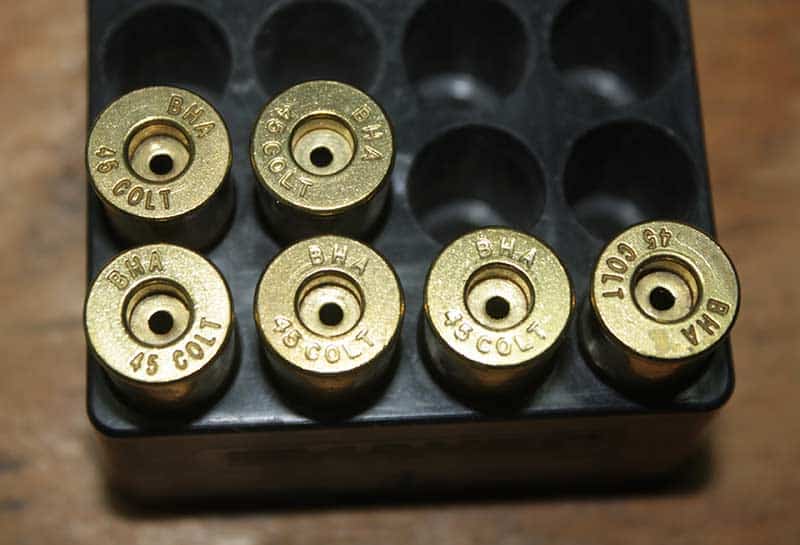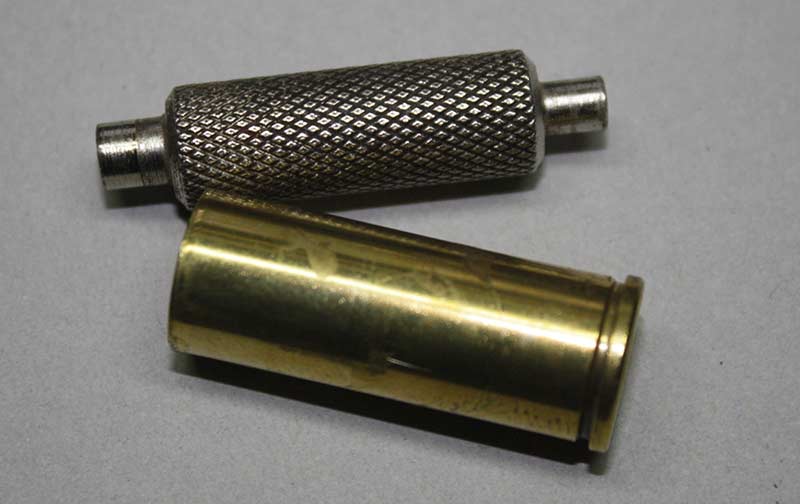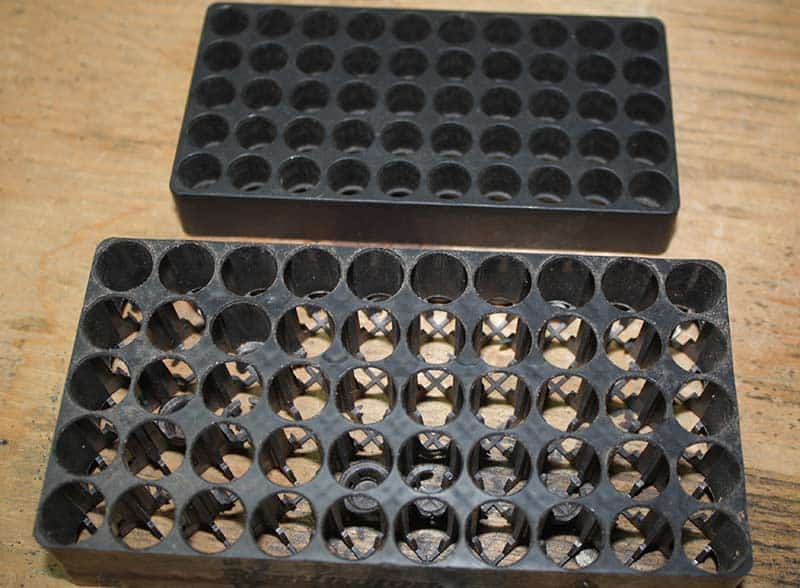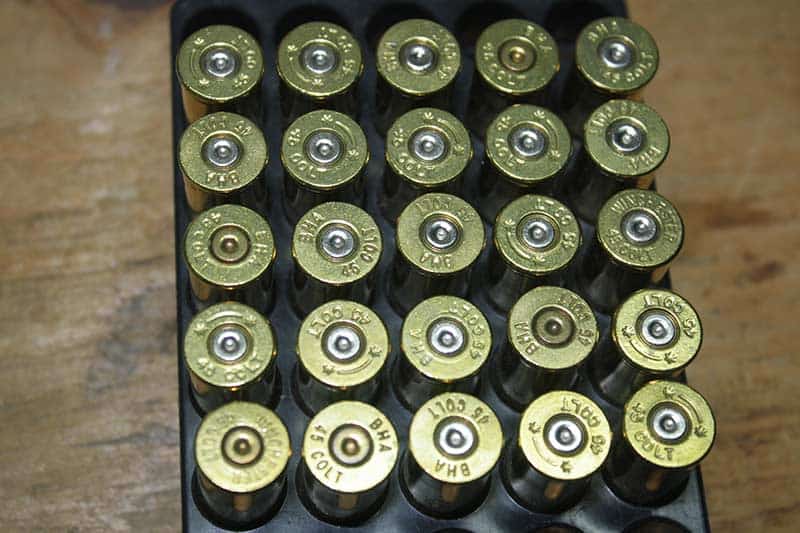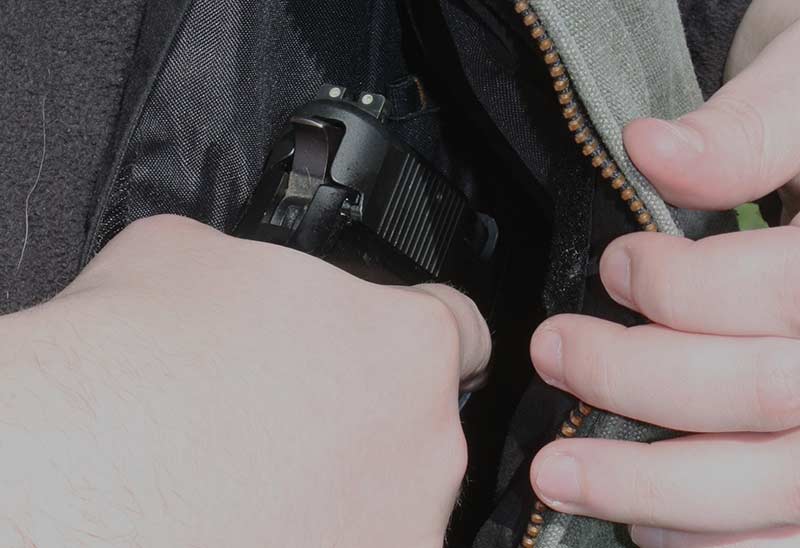Empty Your Pockets
Clean Brass Completely, And Other Tips
Class is in session. Something I learned long ago, and have occasionally had to remind myself of, is the importance of cleaning your primer pockets before you start reloading batches of brass.
Over the years, especially when reloading straight-wall handgun cartridges, I’ve been unpleasantly surprised when a fresh primer does not glide completely into the primer pocket. Much of the time, the cause of a poorly-seated primer is the presence of even a teensy bit of crud in the primer pocket.
For people who reload on a progressive, I suggest cleaning the primer pocket of every empty case at least every other loading. This may take some time, but the reward is not having high primers, which can actually jam up a revolver because once they hit the rear wall of your cylinder window, they can jam up the works. What happens next is having to remove the cylinder from a single-action or swinging the cylinder of a double-action out so the offending cartridge(s) can be removed.
Recently, I was running small batches of .45 Colt and .41 Magnum cases through the reloading process, and after resizing each empty, not only did I check the trim length (1.280 inches for the .41 Magnum and 1.275 inches for the .45 Colt), but I made darned certain to clean the primer pocket. This is the one tiny detail a lot of people overlook, and at some point, it could really mess you up. Improperly seated primers can not only hang up a revolver, but they can also be a pain in the neck when shooting an autoloader.
Many years ago, I picked up a small tool for cleaning primer pockets. One end was sized to fit small primer pockets, and the other ended was sized to fit larger pockets on rifle or pistol cartridges.
Last summer, while chatting with a fellow handgunner at a long-range match, he mentioned how much his shooting had improved by cleaning out each primer pocket. “Oh, you don’t say?”
When I do a good primer pocket cleaning, I’ll pop the spent primer, give the pocket a couple of twists with my cleaning tool, and then trim the brass to length if necessary and stick those cases into the tumbler for a couple of hours. My brass comes out of the tumbler sparkling clean, whether it is Remington, Winchester, Federal, Hornady, Nosler or Starline. There is something about pristine brass that makes reloading that much more enjoyable.
Use Your Trash
Another little trick I learned many moons ago was to save all of those plastic cartridge holders from factory boxes of pistol ammunition. Why? Because they make great loading blocks, especially for empty rifle cartridge cases with bases measuring 0.473 inches.
There are a bunch of rifle cartridges with that base diameter including 7mm Mauser, .257 Roberts, .30-06 Springfield, .308 Winchester, .284 Winchester, .280 Remington, and many others. After resizing, trimming and wet tumbling my rifle brass, I stick it in one of these plastic trays and just leave it for several days to perhaps a week to make sure any moisture evaporates completely. Prior to loading, give it a wipe with a soft, dry cloth.
For smaller cartridges, such as the .222 Remington, .223 Remington and others with small diameter case heads, the smaller-caliber trays, for .38 Special/.357 Magnum rounds will do the same chore.
I’ve been pretty careful over the years about saving those plastic cartridge holders. They’re tough, and you can fit a lot of them into a drawer or a cardboard box under your loading bench. Best of all, they come free with a 20- or 50-round box of large-caliber handgun cartridges.
Sometimes it pays to save a cardboard cartridge box as well. These are good for all sorts of things, including saving small gun parts. Just stick a piece of masking tape on the box and use a Sharpie to label what’s inside.
Cheat Sheet
My journalism day job often includes writing articles about poll results, and one that recently caught my attention came from Rasmussen, an outfit I’ve always considered consistently reliable.
Back on Feb. 8 and 11-12, Rasmussen pollsters did a little survey on how likely voters felt about the looming national elections in November, and they discovered a slight majority (52%) think cheating “is likely to affect the outcome of the next presidential election.” My eyeballs clicked wide open and I had to read that twice. Included in that number were 27% who believe cheating this fall is “very likely.”
What’s this got to do with guns? The party winning the majority will be the party setting the agenda in Congress and state legislatures. If the wrong party regains control on Capitol Hill, and the White House, your gun rights will (notice, nobody said “could”) be in trouble.
Don’t let the suspicion about cheating deter you from voting. Just be prepared to take measures to make sure every vote is counted, especially yours (as in, actually voting!).
Another revelation in the Rasmussen poll: 54% of survey respondents do not believe government officials have done enough to prevent cheating.
Breaking things down along party/philosophical lines was this tidbit: 64% of Republicans, 47% of Independents but only 28% of Democrats think mail-in voting makes cheating easier.
Coming July 1 in W. Virginia
Here’s something you don’t find at every university campus … unless you’re in West Virginia.
Starting July 1 at West Virginia University in Morgantown, the school is implementing the Campus Self-Defense Act, signed into law last year by Gov. Jim Justice. Ivory tower twits may choke on their designer coffee, but in West Virginia, it’s the law, and April Kaull, executive director of Communications at WVU, said the university is required to adhere to it. It “allows a person to carry a concealed pistol or revolver on the grounds of an institution of higher education, with some exceptions, if that person has a current and valid license to carry a concealed deadly weapon.”
According to West Virginia Metro News, the process of getting this program in place took planning, the creation of a committee led by the Dean of Students and the vice president of university relations and enrollment management. There was a steering committee and four subcommittees.
There are places where firearms remain prohibited, and people can find out more by checking out the Campus Carry website.
Mailbag
“Dave Workman and I would have a wonderful time around a campfire. His appreciation for the .41 Rem. Mag is identical to mine. I have a hard time trying to decide which one is best, my S&W Model 57 or the Ruger Blackhawk. Both have 6-inch barrels and I know the Ruger will withstand pressures a little warmer that I want to put through the Smiths but probably not enough to make a difference, but I like to think it does. Honestly, I hate to say this, but the Ruger seems to be a bit easier to hit with than the Smiths. But it has been one of the Smiths that has been with me when I was deer hunting. I have gotten two deer with one of the Smiths, one with a cast 215-grain SWC and the other with a 210-grain Remington JHP. The deer shot with the JHP did not take a single step after the hit, and the hit was not in the central nervous system. It was hit directly where I was aiming, the center of the lungs. It is also my biggest and best mule deer. Love you guys, you are family, MY FAMILY!”
— Philip Gregory
Dave replies: Mr. Gregory, you would always be welcome at my campfire, especially considering your excellent taste in handguns and calibers! I’ve also been shooting 215-grain hard cast SWC bullets lately in my .41 Magnum sixguns, over a charge of 2400, and they work well! Thanks so much for reading American Handgunner and GUNS Insider Online. Stay safe and shoot straight.
